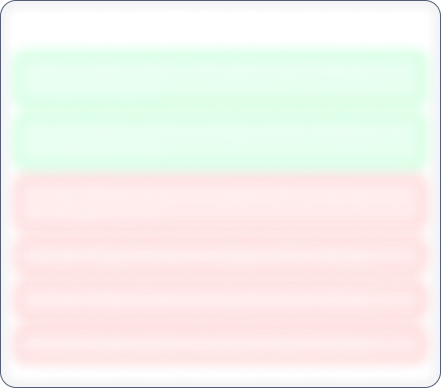Year End Sale 50% off
Ken Enterprises

No Data Available
Investor Sentiment
Ken Enterprises Share price and Fundamental Analysis
Key Metrics
Stock Returns
Stock Heatmap

No Stocks
Smart Score

Unlock Smart Score
See Detailed Analysis & Insights


Unlock Insights
See Detailed Analysis & Insights
Technicals
Returns Calculator
If you would have investedResearch Report
No Research Report
Corporate Action
Financials
Key Ratios
ROE
Avg ROE (3 Yrs) : NaN%
ROCE
Avg ROCE (3 Yrs) : NaN%
ROA
Avg ROA (3 Yrs) : NaN%
NPM
Avg NPM (3 Yrs) : NaN%
Dividend History
5 Year FactSheet
Documents

No Data Available
News
Ken Enterprises Management and History
Company Management


Unlock Management Data
See Detailed Analysis & Insights
Company History
Ken Enterprises Limited was originally incorporated as 'Ken Textiles Private Limited' on June 05, 1998, vide Certification of Incorporation issued by the Registrar of Companies, Pune. Further, the name of Company was changed from 'Ken Textiles Private limited' to Shri Ken Enterprise Private limited, dated March 06, 2004 and again changed from 'Shri Ken Enterprises Private Limited' to 'Ken Enterprise Private Limited', on June 28, 2013, issued by the Registrar of Companies, RoC- Pune. Thereafter, the status of the Company converted into a Public Limited , and the name of the Company was changed from 'Ken Enterprises Private Limited' to 'Ken Enterprises Private Limited' and a fresh Certificate of Incorporation dated August 05, 2024 was issued to the Company by the RoC, Pune.
The Company started manufacturing facility for weaving of fabrics in year 2004. It opened Factory II which was fitted with 12 imported Sulzer Projectile machinery in 2010. The production capacity was expanded by adding Picanol Air Jet weaving machines at Factory I in 2013. The Company started with production of fabric exports in 2014, started finished fabric exports to Latin America and Thailand in 2021.
Ken Enterprises Limited is a a distinguished textile company, which operates into Fabric Business and Apparel Division, providing end-to-end solutions. It is engaged in manufacturing of regular and sustainable greige and finished fabrics for domestic and international markets. It works two manufacturing units and they are both located at Shirol Taluka in the Ichalkaranji District of Maharashtra.
The Company is an approved vendors for leading international brands such as ZARA (Inditex Group), Target and Primark. It provide diverse fabrics such as structures, seer suckers, double layer, three layer, four layer, chambrays, fashion fabrics with metallic yarns etc, catering to various applications such as women fashion wear, men and kids shirts, home textiles, embroidery, light canvas etc amongst others. The ISO 9001:2015 certified company further make exports to 20+ countries, holds certifications like GOTS and BCI, and embraces sustainability.
The Company is planning an IPO upto 89,00,000 Equity Shares comprising a Fresh Issue of 62,00,000 Equity Shares and 27,00,000 Equity Shares through Offer for Sale.
Ken Enterprises Share Price
Ken Enterprises share price reflects investor sentiment toward the company and is impacted by various factors such as financial performance, market trends, and economic conditions. Share price is an indicator which shows the current value of the company's shares at which buyers or sellers can transact.
Ken Enterprises Market Cap
Market capitalization of Ken Enterprises indicates the total value of its outstanding shares. Marketcap is calculated by multiplying share price and outstanding shares of the company. It is a helpful metric for assessing the company's size and market Valuation. It also helps investors understand how Ken Enterprises is valued compared to its competitors.
Ken Enterprises PE Ratio
Ken Enterprises PE ratio helps investors understand what is the market value of each stock compared to Ken Enterprises 's earnings. A PE ratio higher than the average industry PE could indicate an overvaluation of the stock, whereas a lower PE compared to the average industry PE could indicate an undervaluation.
Ken Enterprises PEG Ratio
The PEG ratio of Ken Enterprises evaluates its PE ratio in relation to its growth rate. A PEG ratio of 1 indicates a fair value, a PEG ratio of less than 1 indicates undervaluation, and a PEG ratio of more than 1 indicates overvaluation.
Ken Enterprises ROE (Return on Equity)
Return on Equity (ROE) measures how effectively Ken Enterprises generates profit from shareholders' equity. A higher ROE of more than 20% indicates better financial performance in terms of profitability.
Ken Enterprises ROCE (Return on Capital Employed)
Return on Capital Employed (ROCE) evaluates the profitability of Ken Enterprises in relation to its capital employed. In simple terms, ROCE provides insight to investors as to how well the company is utilizing the capital deployed. A high ROCE of more than 20% shows that the business is making profitable use of its capital.
Ken Enterprises Total Debt
Total debt of Ken Enterprises shows how much the company owes to either banks or individual creditors. In simple terms, this is the amount the company has to repay. Total debt can be a very useful metric to show the financial health of the company. Total debt more than equity is considered to be a bad sign.
Ken Enterprises Debt to Equity Ratio
The Debt-to-Equity (DE) ratio of Ken Enterprises compares its total debt to shareholders' equity. A higher Debt to Equity ratio could indicate higher financial risk, while a lower ratio suggests that the company is managing its debt efficiently.
Ken Enterprises CAGR (Compound Annual Growth Rate)
CAGR shows the consistent growth rate of Ken Enterprises over a specific period, whether it is over a month, a year, or 10 years. It is a key metric to evaluate the company’s long-term growth potential. Main metrics for which CAGR is calculated are net sales, net profit, operating profit, and stock returns.
Ken Enterprises Technical Analysis
Technical analysis of Ken Enterprises helps investors get an insight into when they can enter or exit the stock. Key components of Ken Enterprises Technical Analysis include:
Support Levels (S1, S2, S3)
There are usually multiple support levels, but the main support levels for a stock are S1, S2, S3. Support levels indicate price points where stock might get support from buyers, helping the stock stop falling and rise.
Resistance Levels (R1, R2, R3)
There are usually multiple resistance levels, but the main resistance levels for a stock are R1, R2, R3. Resistance levels represent price points where Ken Enterprises shares often struggle to rise above due to selling pressure.
Ken Enterprises Dividends
Dividends refer to the portion of the company’s profits distributed to its shareholders. Dividends are typically paid out in cash and reflect Ken Enterprises ’s financial health and profitability.
Ken Enterprises Bonus Shares
Bonus shares are usually given by companies to make the stock more affordable, increase liquidity, boost investor confidence, and more.
Ken Enterprises Stock Split
Stock split increases the number of its outstanding shares by dividing each existing share into multiple shares. When the company offers a stock split, the face value of the stock reduces in the same proportion as the split ratio.
Ken Enterprises Financials
The financials of Ken Enterprises provide a complete view to investors about its net sales, net profit, operating profits, expenses, and overall financial health. Investors can analyze financial data to assess the company’s stability and also understand how the company has been growing financially.
Ken Enterprises Profit and Loss Statements
The profit and loss statement of Ken Enterprises highlights its net sales, net profit, total expenditure, and operating profits in the current financial year. This Profit and Loss statement is crucial for evaluating the profitability and financial stability of Ken Enterprises .
Ken Enterprises Balance Sheet
The balance sheet presents a snapshot of Ken Enterprises ’s assets, liabilities, and equity of shareholders, providing insights into the financials of the company.
Ken Enterprises Cashflow Statements
Cashflow statements track the company's cash inflows and outflows over a period. It is an essential tool for understanding how well the company manages its liquidity and finances.


